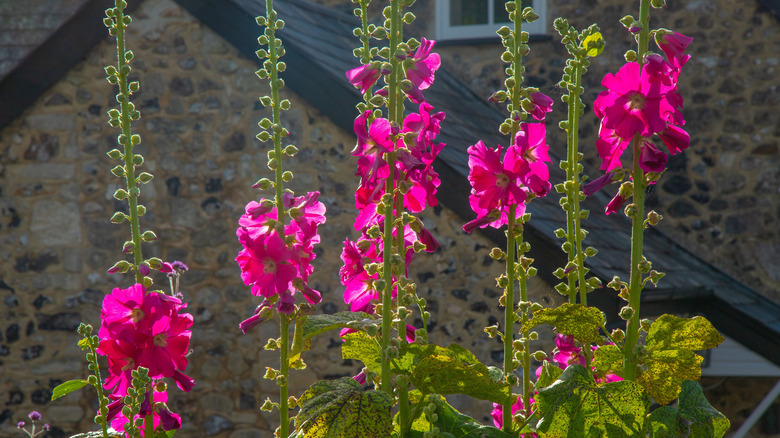The Self-Seeding Flower With Stunning Blooms More Gardeners Will Plant In 2026
Garden designs are prone to trends as much as interior designs. You shouldn't feel like you have to follow the latest trends, but they can be a fun way to discover new plants and add interest to your garden. One gorgeous flower we're predicting will trend next year is Verbascum phoeniceum. This dramatic, self-seeding plant goes by the common name of purple mullein.
Verbascum phoeniceum produces tall spikes covered in small purple, pink, or white flowers that bloom from early spring through summer. Each plant can grow up to two to three feet tall and one foot wide. They actually prefer poor soil, so they can bring life to the neglected and forgotten corners of your garden without requiring a lot of effort. It's also fairly resistant to pests and diseases and tolerant of dry conditions. However, it does best in full sun, so you can't use it to fill in bare, shady spots. Purple mullein is ideal for a border or anywhere that will look good with vertical flowers. The tall spikes are striking in cut flower arrangements. If you want to design and plant the perfect cottage garden, these plants will fit your aesthetic.
Growing and care tips to ensure purple mullein thrives
For blooms the first year, start seeds indoors eight to twelve weeks before the last frost. Press them lightly into the potting mix since the seeds need light to germinate. They'll sprout in approximately two to three weeks if you maintain moist soil and keep them between 70 and 75 degrees Fahrenheit. Give your emerging seedlings plenty of light, either by placing them in a sunny spot in your house or under a grow light.
When the weather starts warming up, save your garden seedling from transplant shock by hardening them off before planting them in the ground. Put the plants outside in a protected spot for a week or so. If temperatures drop below freezing, bring them back inside. Plant them in your garden on a mild day, water thoroughly, and mulch. Although purple mullein does well in poor soil, you can fertilize the plants when they're three to four weeks old using half-strength fertilizer when new growth appears after transplanting. At the end of the season, if you allow some flowers to go to seed, they'll self-sow and return next year.

